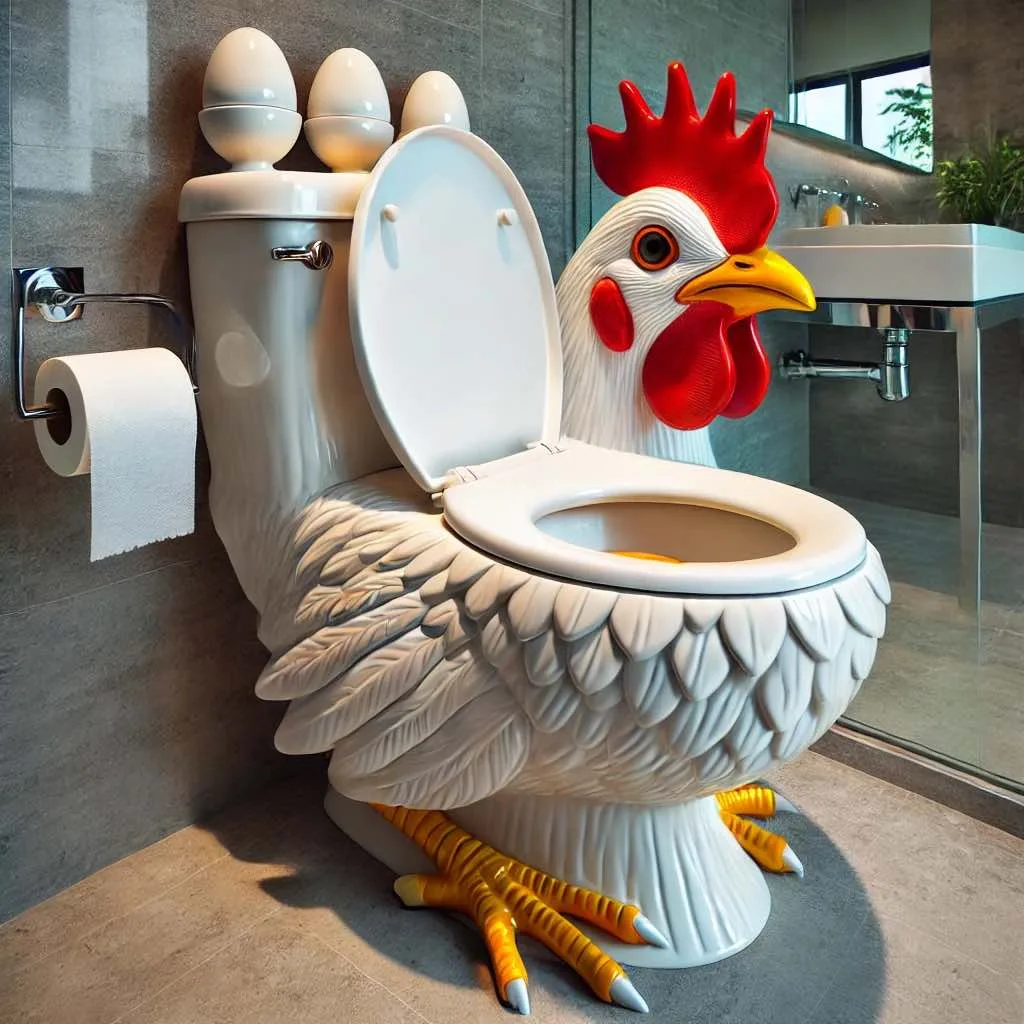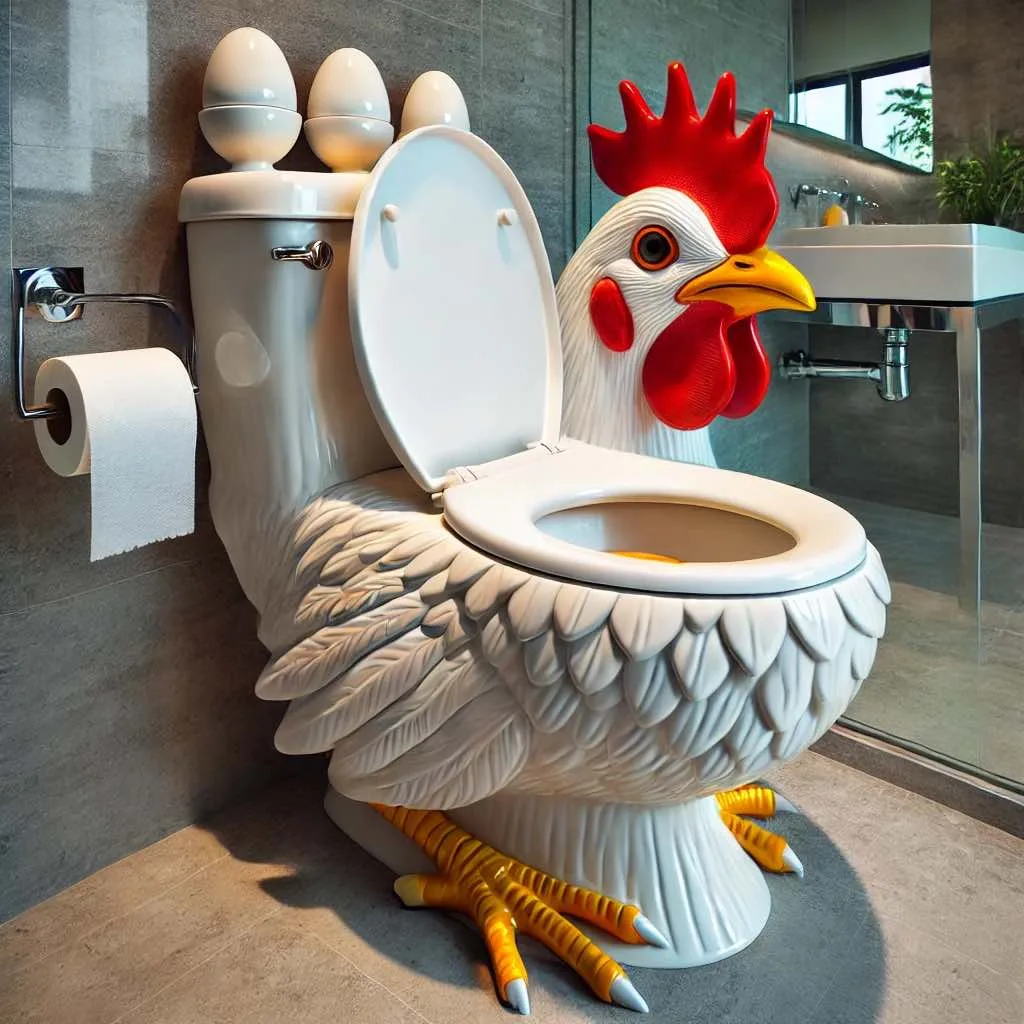The Rise of Chicken Toilets
Raising backyard chickens has become increasingly popular among farmers, homesteaders, and urban dwellers. These feathered companions provide fresh eggs, natural pest control, and a touch of rural charm to any setting. However, one of the biggest challenges that poultry keepers face is managing chicken waste. Traditional coops can quickly become dirty, leading to unsanitary conditions, unpleasant odors, and potential health risks for both chickens and their owners.
This is where chicken toilets come into play. A revolutionary concept in poultry care, chicken toilets are designed to promote cleanliness, reduce waste buildup, and create a healthier environment for your flock. Just as humans benefit from proper sanitation, chickens can also experience improved well-being with efficient waste disposal systems.
In this in-depth guide, we’ll explore:
- What chicken toilets are and how they work
- The different types of chicken toilets available
- Benefits of using chicken toilets
- How to train chickens to use them
- DIY ideas for creating your own chicken toilet system
- Common challenges and solutions
By the end of this article, you’ll have a comprehensive understanding of how chicken toilets can revolutionize poultry care, making coop maintenance easier and improving the overall health of your birds.
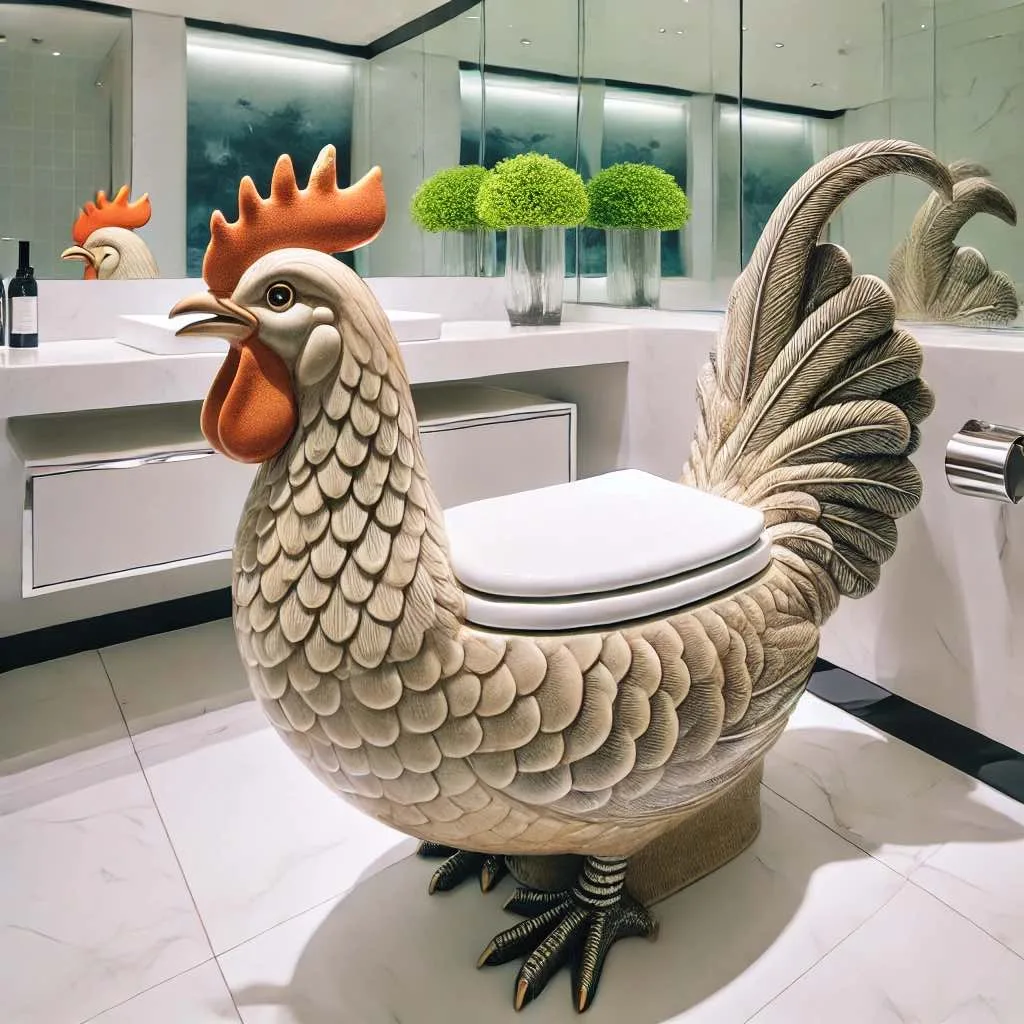
Everything You Need to Know About Chicken Toilets
1. What Are Chicken Toilets?
A chicken toilet is a specialized waste management system designed to keep chicken coops cleaner by collecting and containing droppings efficiently. These systems prevent waste from accumulating in random spots, making cleaning easier and reducing odors and bacterial buildup.
How Do They Work?
Chicken toilets function in a few different ways, depending on the design:
- Dedicated Waste Collection Areas: Some setups feature designated toilet zones with bedding materials that absorb waste, similar to a litter box.
- Automatic Droppings Collection Systems: These use slotted floors or mesh grates with trays underneath to catch and contain droppings for easy disposal.
- Perch-Based Toilets: Chickens naturally drop waste while they roost, so installing a waste-catching tray under perches helps keep the coop cleaner.
- Flushable Systems: More advanced designs incorporate water-based or composting toilets that manage waste similarly to human toilets.
Regardless of the type, the goal is to create a specific area where chickens instinctively relieve themselves, reducing overall mess in the coop.
2. Types of Chicken Toilets
There are several different chicken toilet designs, each catering to different coop setups and flock sizes.
A. Simple Litter Box-Style Toilets
- Uses a tray filled with absorbent materials like sand, wood shavings, or peat moss.
- Chickens are trained to use the designated area, similar to how cats use litter boxes.
- Best for small coops or urban backyard flocks.
B. Droppings Trays and Grate Systems
- A mesh or slotted flooring is installed in the coop with a removable tray beneath.
- Waste falls through the grate into the collection tray, making daily cleaning easy.
- Ideal for larger coops with multiple birds.
C. Perch Toilets
- Since chickens poop frequently while roosting, a tray or deep litter system is placed directly under perches.
- This setup keeps most of the waste concentrated in one area, making it easier to clean.
- Great for coops where birds spend a lot of time perching.
D. Composting Chicken Toilets
- These work like composting toilets for humans but are designed for chickens.
- Waste is collected in a compost bin, breaking down naturally with carbon-rich materials.
- Perfect for eco-conscious chicken keepers who want to reuse waste for gardening.
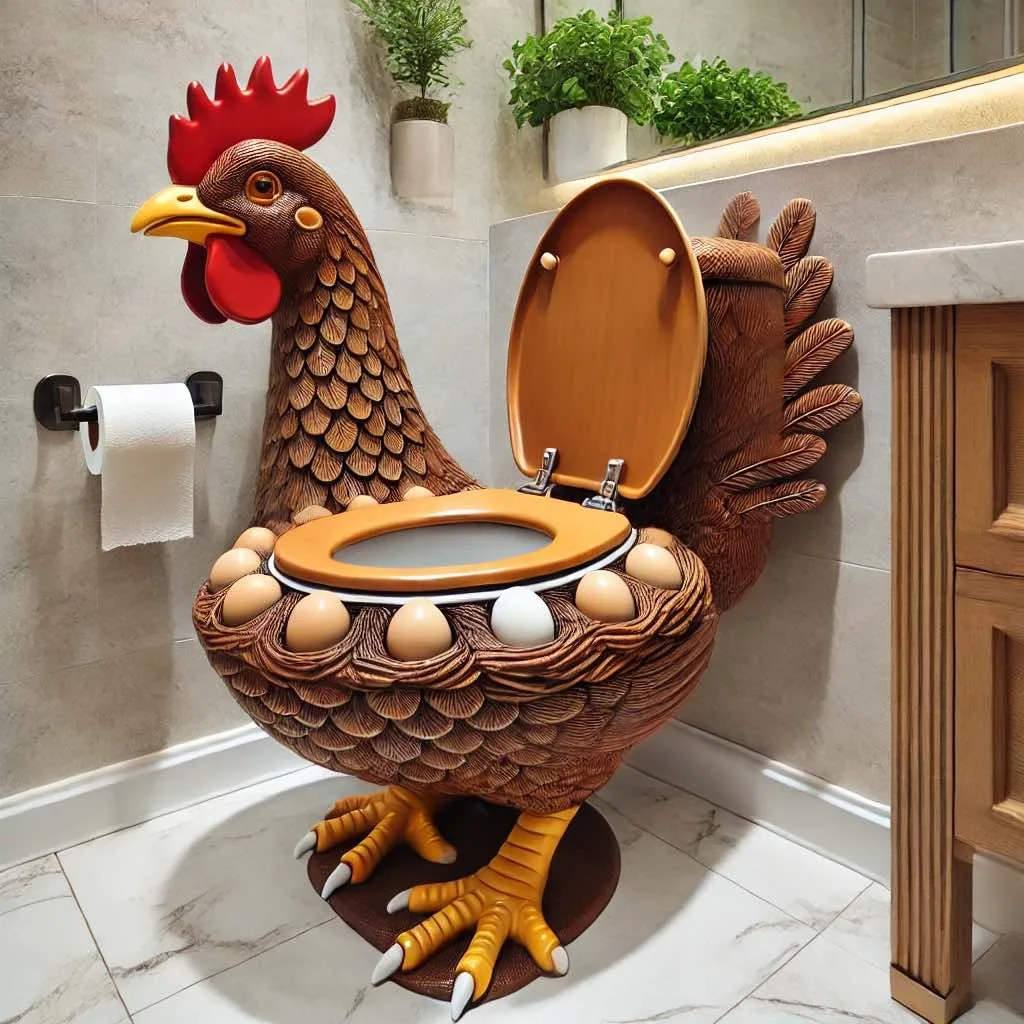
E. Flushable or Water-Based Systems
- These high-tech systems use small-scale plumbing solutions to flush waste away.
- Requires more setup and maintenance but offers the highest level of sanitation.
- Best for large-scale farms or experimental poultry keepers.
Choosing the right chicken toilet system depends on the size of your flock, the space available, and how much effort you’re willing to invest in maintenance.
3. Benefits of Chicken Toilets
Using chicken toilets can significantly improve coop hygiene and poultry care. Here are the top benefits:
A. Cleaner Coops and Healthier Chickens
- Reduces ammonia buildup from droppings, which can harm respiratory health.
- Prevents the spread of bacteria, parasites, and diseases.
- Keeps feathers and feet cleaner, reducing the risk of infections.
B. Easier Coop Maintenance
- Less frequent deep cleaning since waste is contained in specific areas.
- Faster daily cleaning routines, saving time and effort.
- Reduces the need for excessive bedding materials, cutting costs.
C. Odor Reduction
- Proper waste management significantly minimizes bad smells.
- Composting toilets help break down waste quickly, preventing odor buildup.
D. Environmental Benefits
- Composting systems turn chicken waste into valuable fertilizer.
- Reduces waste pollution in the surrounding environment.
E. Encourages Natural Behaviors
- Some chickens naturally prefer designated toileting areas, making training easy.
- Reduces the stress of constantly walking on soiled ground.
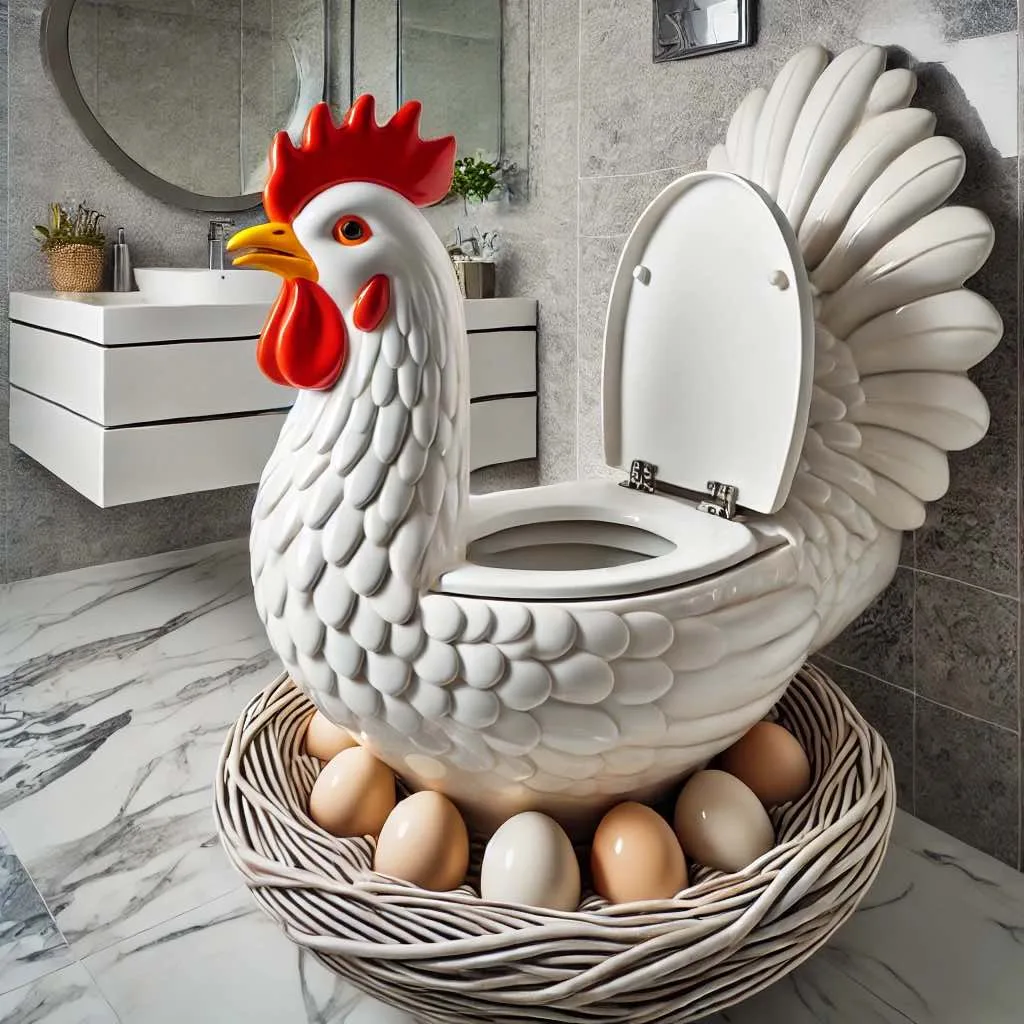
4. How to Train Chickens to Use a Toilet System
Training chickens to use chicken toilets is similar to training pets like cats or dogs. Follow these steps:
Step 1: Choose the Right Location
- Place the toilet system in a corner or under roosting bars.
- Chickens tend to poop in predictable spots, so position the toilet accordingly.
Step 2: Use Visual and Physical Cues
- Line the area with a different type of bedding (e.g., sand, pine pellets) to make it recognizable.
- Place a fake chicken or decoy to encourage them to investigate.
Step 3: Reward and Reinforce
- Give treats when chickens use the correct spot.
- Spend time observing and guiding them toward the toilet.
Step 4: Be Patient and Consistent
- Some chickens may take a few days to a few weeks to fully adapt.
- Clean the toilet area regularly to encourage continued use.
With patience, most chickens can learn to use a toilet system effectively.
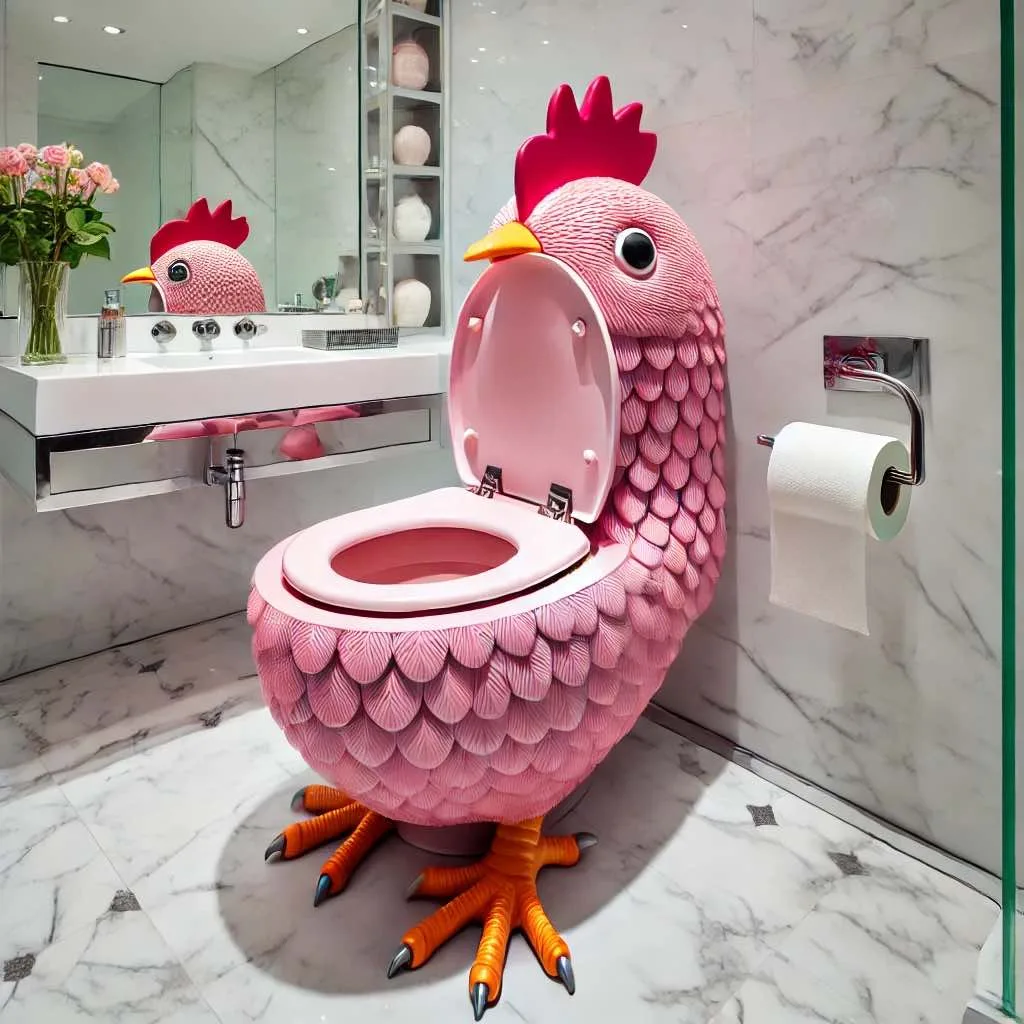
5. DIY Chicken Toilet Ideas
Want to build your own chicken toilet? Here are some easy DIY ideas:
A. The Bucket Compost Toilet
- Use a 5-gallon bucket with a small opening.
- Fill it with carbon-rich materials like sawdust or shredded paper.
- Regularly dump the contents into a compost bin.
B. Upcycled Tray and Grate System
- Use an old baking tray or plastic bin as a droppings collection tray.
- Add a metal or plastic grate on top to let waste fall through.
C. Sand Litter Box
- Fill a large shallow tray with fine sand.
- Chickens will naturally use it, and waste can be scooped out daily.
These DIY methods provide an affordable and efficient way to improve coop sanitation.
The Future of Poultry Hygiene
Chicken toilets are more than just a novelty—they’re a practical solution for keeping coops clean, reducing disease, and making poultry care easier. Whether you choose a simple litter box, a composting system, or a high-tech flushable setup, incorporating a chicken toilet into your coop can lead to happier, healthier birds and a more pleasant chicken-keeping experience.
If you’re a chicken keeper looking for a game-changing way to manage waste, investing in or building a chicken toilet is a step in the right direction. 🐔🚽✨
